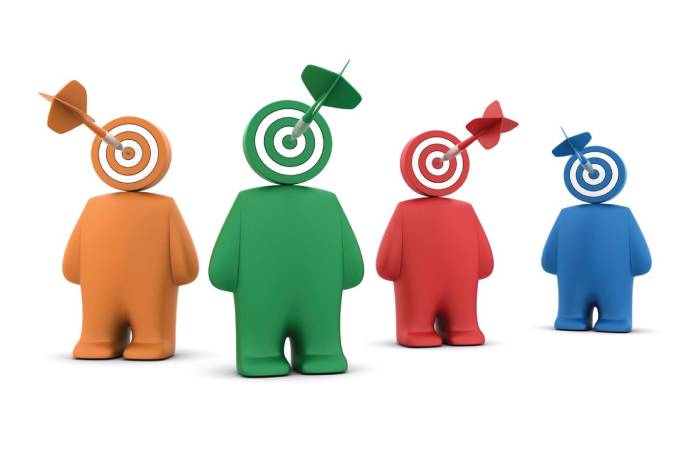Table of Contents
Potential Customers Definition
Potential customers are a person who could become a buyer or consumer of the products offered by a company.
Of course, every company, large or small, needs its customers because customers buy their products, allowing them to generate income and, of course, profits.
Consequently, potential customers are critical to any company since they are a vast opportunity for growth and development.
Now, for that reason, potential customers are a crucial point to achieve profit at a later time, because they are not our customers yet. Still, they can become potential buyers of our products in the future.
Importance of Potential Customers

Therefore, potential customers focus on today’s marketing because these customers are the ones who ensure the future of companies, both in their performance and in their profitability.
Today’s marketing strategies adapt to the needs and usage, and consumption habits that future business customers manifest.
1. All Marketing must Revolve around the Customer
- The marketing planning process, from its research phase to the development and production of products, as well and objection of future profits must revolve around the potential clients that we can capture.
2. The Recruitment Process Must be Careful
- Given that potential clients are significant capturing them must be careful and very useful.
- It will depend on whether the relationship that establishes will last in the long term and that it is also beneficial.
3. All marketing Strategies must be Integrated
- So, the marketing strategies used must well integrate to achieve future loyalty of these people.
- Thus, it is necessary to make a correct classification of customers and provide them with detailed and personalized attention, according to their characteristics and always customer satisfaction.
How Should We Proceed with Potential Customers?
To convert potential customers into future buyers of our products, we must proceed as follows:
1. Conduct an Investigation Process
- Therefore, marketing research is an indispensable step to locate our potential clients and then know them to determine which of them are best suited to our proposals.
- Since we currently have many technological tools that we can use to find information, one of the most important is the data available on the internet and has no cost.
- However, it will be necessary not to rely on existing information, but the information and data must be searched directly by the company.
- This research will give us more specific and accurate data but will have a higher cost.
2. Carry out a Segmentation Process
- After the necessary information obtains, we must continue with the segmentation process. Since the clients present marked differences, we divide them into groups or market segments.
- Thus, segmentation allows potential customers to group according to specific homogeneous characteristics such as needs, behavior, and consumption habits; or taking into account any characteristic or indicator that will enable us to group with similar variables.
- This grouping will adapt the products and marketing strategies according to the tach group of clients’ fundamental requirements.
- It turns out that the segments generate customer profiles based on variables such as gender, age, income level, type of work, location, among others.
- Also, it allows us to group clients based on interests, lifestyles, attitudes, and values that each segment has in common.
3. Define Strategies
- Once we determine potential customers’ needs through market research and group them homogeneously through segmentation; We look for the best way to capture their attention and attract them.
- As soon as at this point, the company defines the strategies that will be put into practice to convert potential clients into real clients.
- These strategies must carefully review to correctly adapt to each profile or group of clients that identify.
- Finally, implementing marketing strategies with our potential clients will depend directly on how effective the marketing research has been.
- If we achieve an explicit knowledge of the client, the adaptation of our strategies is more effective.
Types of Potential Customers

In a potential market, there are specific characteristics that differentiate one customer from another. It quantifies this segmentation. There are a series of processes or variables that allow its differentiation.
We can classify and group them into three types of potential customers. They are personalities who act differently from the stimuli of sales strategies.
We classify them based on your shopping habits. Consequently, we have potential customers: according to the frequency of their purchases, the volume of their assets, and the degree of influence.
Let’s take a closer look at respectively of these customer rankings.
1. Potential Customer According to the Frequency of Their Purchases
- As the name suggests, these people are classified based on how many times they shop. They divide into occasional, regular, and frequent buyers.
- The occasional one will be that customer who buys only once and will rarely return.
- The usual will be the one that usually buys intermittently.
- Frequent is that customer loyalty to your product or service who will buy assiduously.
2. Potential Customer According to the Volume of Purchases
-
- Another way to classify potential customers base on the volume of purchases. They can be high, medium, or low volume.
-
- The potential customer of a high volume of purchases will be the one with sufficient purchasing power to buy large quantities of your products or services.
- The potential customer of average purchase volume will be the one who also makes large purchases. Not as high as the high volume client, but higher than the low volume client.
- Finally, the low-volume potential customer is usually the most common. The volumes of your purchases are “normal” or within a logical average.
3. Potential Customer According to their Degree of Influence
- These types of potential customers are those who, with their purchases, can influence other people to buy. These customers are not very common.
- An example of this type of client would be famous people, artists, athletes, etc. They are people who have many admirers around them. Anything you do or say can influence many people.
- Other potential customers can influence their environment without being known to the great mass to a lesser degree. For example, outgoing and charismatic people can be a person who controls others to buy a product.
- The great potential that influential potential customers can bring is to make your products or services known to as many people as possible.
Conclusion
We must be certain that potential customers are essential for its performance, progress, and maintenance in a privileged place in the market.
Thus, we must ensure that our marketing strategies approach correctly, seeking to identify and take advantage of these potential customers as an essential source of opportunity.

